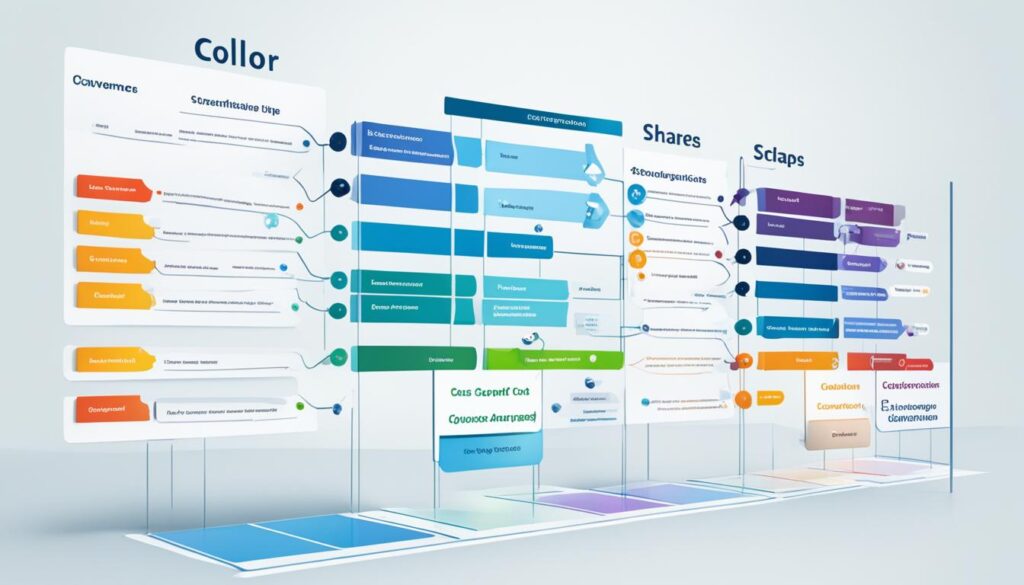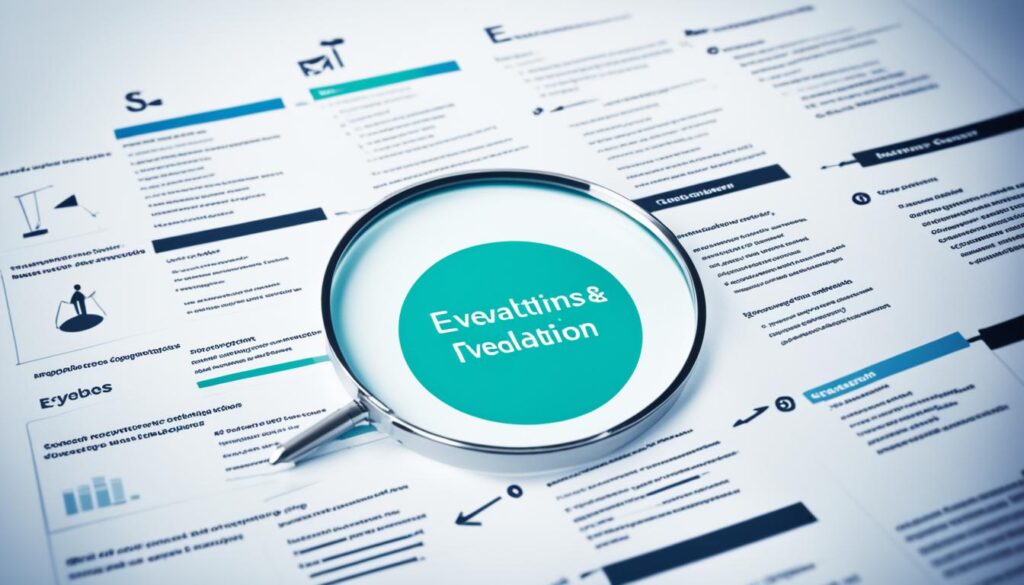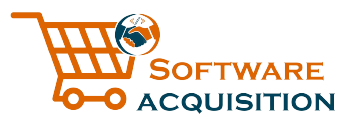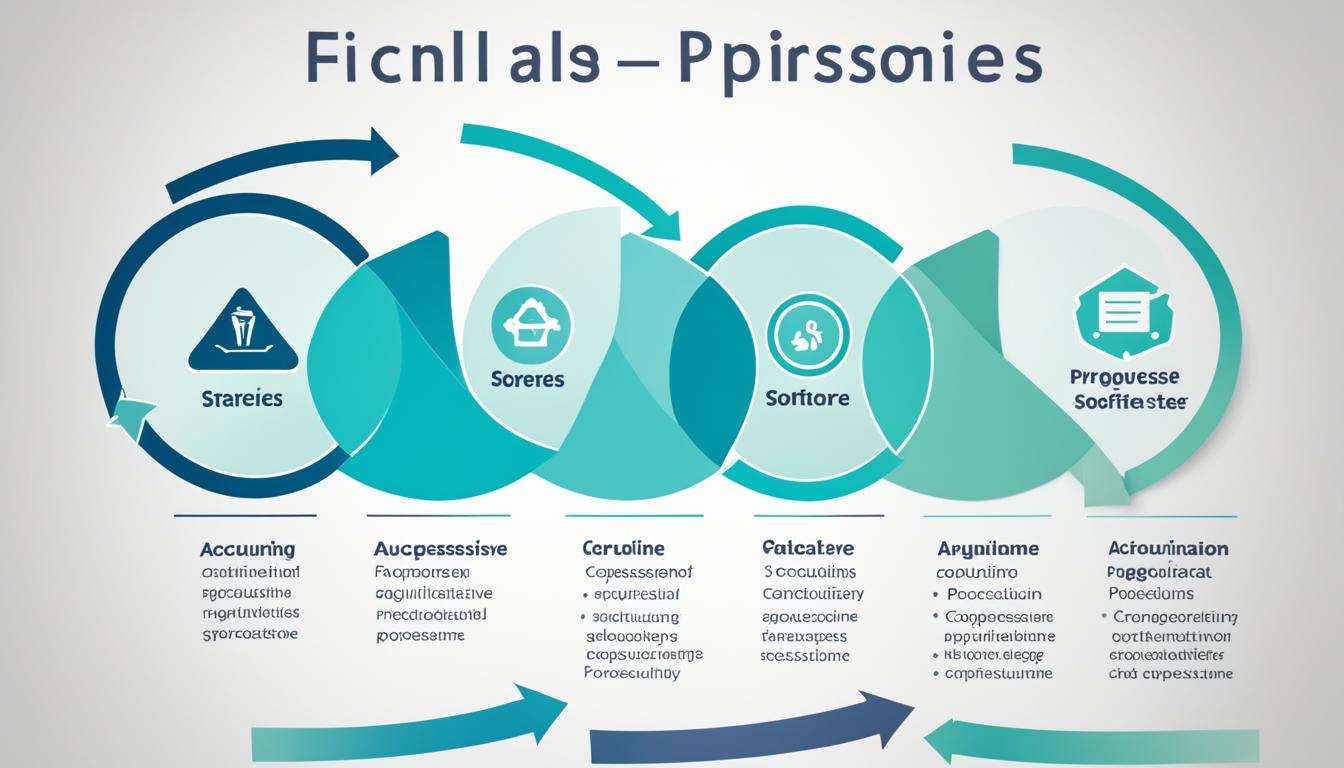The software acquisition process involves a series of steps that businesses must follow to procure and integrate new software effectively. These steps, including planning the project, building a team, developing requirements, evaluating vendor proposals, selecting a solution, and managing the software contract, are essential for ensuring that organizations choose the right software and seamlessly integrate it into their existing systems.
Key Takeaways:
- Software acquisition process steps are crucial for businesses to efficiently procure and integrate new software.
- Planning the project involves identifying stakeholders, defining the problem, and compiling requirements.
- Building a cross-functional team and evaluating vendors are important for successful software acquisition.
- The development of requirements and selecting a solution should align with the organization’s needs and goals.
- Contract negotiation and management ensure favorable terms and successful implementation.
Planning the Project
Planning the project is a critical step in the software acquisition process. It sets the stage for a successful implementation by ensuring that all necessary aspects are taken into account before moving forward. During this phase, businesses need to identify stakeholders, define the problem that the software will solve, and compile a comprehensive list of requirements.
When planning the project, it is vital to consider factors such as budget, timeline, and resource allocation. This helps businesses establish realistic expectations and ensures that the software acquisition process aligns with the overall strategic goals of the organization.
Effective planning is like creating a roadmap for success in software procurement. It helps businesses navigate the complex landscape of available options, make informed decisions, and avoid potential pitfalls along the way.
By clearly defining the problem that the software will address, businesses can narrow down their options and focus on solutions that meet their specific needs. The planning phase also provides an opportunity to gather input from relevant stakeholders, ensuring that their requirements and expectations are considered during the software acquisition process.
Additionally, planning enables businesses to allocate the necessary resources, including budget and personnel, for the software acquisition project. This helps prevent delays or budget overruns, ensuring a smooth and efficient implementation.
Key Steps in Planning the Project
- Identify stakeholders: Determine who will be involved in the software acquisition process, including decision-makers, end-users, and IT experts.
- Define the problem: Clearly articulate the problem or challenge that the software will address, ensuring a focused and targeted approach.
- Compile requirements: Create a comprehensive list of functional and non-functional requirements that the software solution must meet.
- Consider budget and timeline: Assess the financial resources available and establish a realistic timeline for the software acquisition process.
- Allocate resources: Determine the necessary personnel and budgetary allocations for the project, ensuring adequate support and funding.
Visualizing the Planning Process

| Key Considerations | Benefits |
|---|---|
| Identifying stakeholders | Ensures representation of all relevant parties and their input in the decision-making process |
| Defining the problem | Provides clarity and focus, helping businesses select a software solution that addresses the specific challenge |
| Compiling requirements | Creates a solid foundation for vendor evaluation and software selection |
| Considering budget and timeline | Helps set realistic expectations and avoid cost and time-related challenges |
| Allocating resources | Ensures that the necessary personnel and budget are available when needed |
Building a Team and Vendor Evaluation
Building a team is a crucial step in the software acquisition process. Effective collaboration and execution are dependent on assembling a team that includes representatives from various departments. These departments, including IT, finance, and operations, bring valuable insights and expertise to the table.
By involving representatives from different areas of the organization, businesses can ensure that the software solution addresses the needs and requirements of all stakeholders. The team members can contribute their knowledge and perspectives, helping to create a comprehensive understanding of the organization’s software procurement strategies.
Vendor evaluation is another critical aspect of the software acquisition process. It involves assessing potential vendors based on specific criteria to determine their compatibility with the organization’s requirements. Factors such as reputation, expertise, and product fit are considered during this evaluation process.
Successful vendor evaluation enables businesses to make informed decisions and select the right vendor for their software acquisition. It ensures that the chosen vendor aligns with the organization’s goals and can provide a software solution that meets their needs. With a reliable and trustworthy vendor, businesses can enhance the overall software procurement process.
Here is a table summarizing the key steps involved in building a team and evaluating vendors:
| Software Acquisition Process Steps | Software Procurement Strategies |
|---|---|
| Build a team with representatives from different departments | Involving diverse perspectives and expertise |
| Evaluate potential vendors based on criteria such as reputation, expertise, and compatibility | Making informed decisions and selecting the right vendor for the software acquisition |

Building a strong team and conducting thorough vendor evaluations are crucial steps in the software acquisition process. They ensure that the chosen software solution matches the organization’s requirements and goals. By bringing together the right team and selecting the best vendor, businesses can lay the foundation for a successful software procurement process.
Developing Requirements and Selecting a Solution
Developing clear requirements is a crucial step in the software acquisition process. By documenting specific functionalities, features, and performance criteria, businesses ensure that the chosen software solution aligns with their needs. Clear requirements provide a foundation for evaluating and selecting the right solution.
After identifying the requirements, businesses can then evaluate different software options. This evaluation involves considering factors such as functionality, compatibility, scalability, and cost. By comparing these factors, businesses can narrow down their choices to the solutions that best meet their organization’s needs and goals.
During the evaluation process, it is essential to consider the software’s functionality. This includes assessing whether the software can perform the necessary tasks and meet the organization’s unique requirements. Compatibility is another critical factor to consider, as the software needs to integrate seamlessly with the organization’s existing systems.
Scalability is also important when selecting a solution. Businesses should assess whether the software can accommodate future growth and expansion without compromising performance or requiring significant modifications. Additionally, cost considerations play a vital role in the decision-making process, as businesses need to ensure that the chosen software solution fits within their budgetary constraints.
Evaluating software options:
- Assess functionality and performance capabilities
- Evaluate compatibility with existing systems
- Consider scalability for future growth
- Take into account the total cost of ownership
Once the evaluation is complete, businesses can make an informed decision and select the software solution that best aligns with their requirements. This decision-making process involves considering all the factors discussed above and weighing their importance based on the organization’s priorities and goals.
“Choosing the right solution requires careful consideration of many factors, including functionality, compatibility, scalability, and cost. By evaluating and selecting a solution that meets their specific needs and goals, businesses can ensure successful software acquisition and implementation.”
Contract Negotiation and Management
Once a software solution has been selected, businesses need to engage in contract negotiation and management with the vendor. This critical step ensures that both parties establish clear terms and conditions while aligning their expectations for the software acquisition process.
During the contract negotiation phase, businesses and vendors discuss crucial elements such as pricing, support services, implementation timelines, and any additional terms specific to the software solution. Effective negotiation allows businesses to secure favorable pricing and ensure that the contract encompasses their unique requirements.
“Effective contract negotiation helps businesses secure favorable terms and ensure that both parties are clear on their responsibilities.”
Once the contract is finalized, contract management comes into play. This involves actively monitoring the vendor’s performance and ensuring compliance with the agreed-upon terms. Regular communication with the vendor and addressing any issues promptly is crucial for successful contract management.
Contract management ensures that the software acquisition process remains on track and any challenges are resolved efficiently. It involves proactive monitoring, timely updates, and ongoing evaluation of the vendor’s deliverables. By managing the contract effectively, businesses can mitigate risks, maximize value, and ensure a smooth software implementation.
Benefits of Effective Contract Negotiation and Management:
- Securing favorable pricing and terms
- Strengthening the relationship and collaboration with the vendor
- Aligning expectations between the business and the vendor
- Mitigating risks and resolving potential conflicts
- Ensuring compliance with contractual obligations
- Optimizing value from the software acquisition
As a visual representation, here’s a table outlining the key steps involved in contract negotiation and management:
| Step | Description |
|---|---|
| 1 | Reviewing and revising contract terms |
| 2 | Ensuring pricing and payment details align with the budget |
| 3 | Finalizing support services and service level agreements (SLAs) |
| 4 | Establishing implementation timelines and milestones |
| 5 | Clarifying intellectual property rights and data security |
| 6 | Monitoring vendor performance and addressing any issues |
| 7 | Ensuring compliance with contractual obligations |
Effective contract negotiation and management are vital to the success of the software acquisition process. By carefully defining terms, monitoring performance, and addressing any issues promptly, businesses can ensure a seamless transition and maximize the value they derive from the software solution.
Conclusion
The software acquisition process involves a series of essential steps that businesses must undertake to procure and integrate new software effectively. By following a well-structured approach, including planning the project, building a team, developing requirements, evaluating vendors, selecting a solution, and managing the contract, businesses can streamline the software acquisition process and ensure the selection of the right software solution that meets their needs.
By strategically planning the project, businesses can identify stakeholders, define the problem, and compile a comprehensive list of requirements. Building a diverse team enables collaboration and ensures expertise from different departments. Through rigorous evaluation of potential vendors based on criteria such as reputation and compatibility, businesses can make informed decisions.
Developing clear requirements and meticulously assessing different software options allow businesses to select the most suitable solution. Contract negotiation and management ensure favorable terms and ongoing compliance with the agreed-upon terms. Implementing a systematic approach throughout the software acquisition process improves the chances of a successful software implementation and enhances the overall efficiency of the business operations.
In conclusion, by following the software acquisition process steps and implementing software procurement strategies, businesses can optimize their software acquisition journey. This comprehensive approach enables businesses to select the right software solution, resulting in streamlined operations, improved productivity, and long-term success.
FAQ
What is the software acquisition process?
What are the steps involved in planning the project?
Why is building a team important in the software acquisition process?
How should businesses evaluate vendors during the software acquisition process?
What is the importance of developing clear requirements in the software acquisition process?
How should businesses select a software solution?
What is involved in contract negotiation and management?
What is the purpose of a software implementation checklist?
Source Links
- https://www.fhwa.dot.gov/publications/research/operations/its/98036/rdsuccessvol2.pdf
- https://its.humboldt.edu/sites/default/files/docs/po-docs/Software Selection Process 09-12.pdf
- https://www.mines.edu/policy-library/wp-content/uploads/sites/87/2021/12/Procedures-for-the-Acquisition-of-Software.pdf



